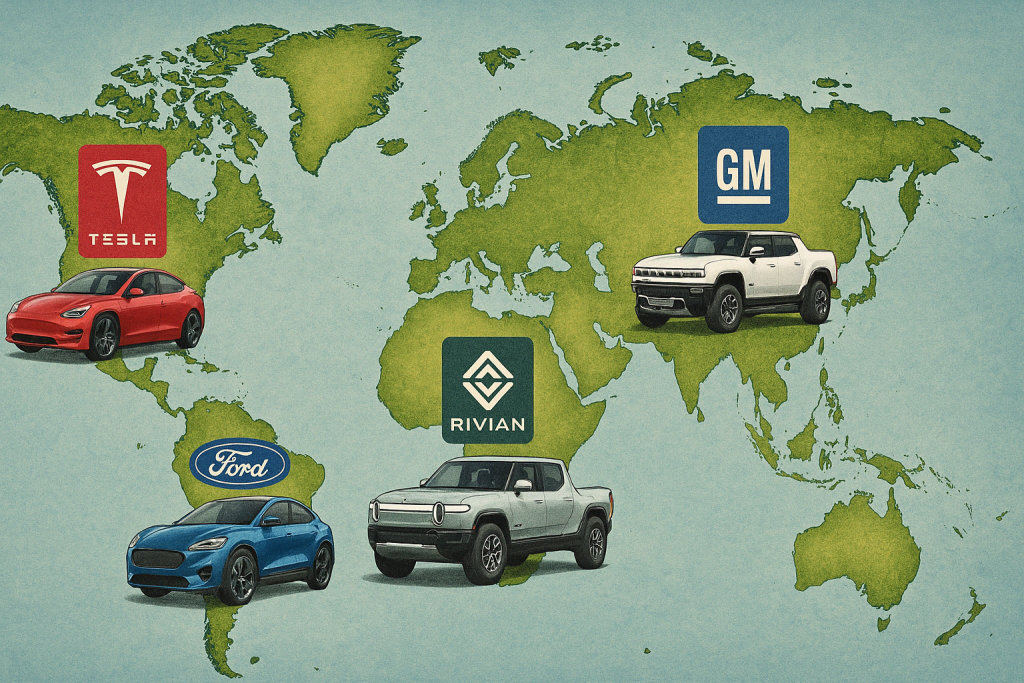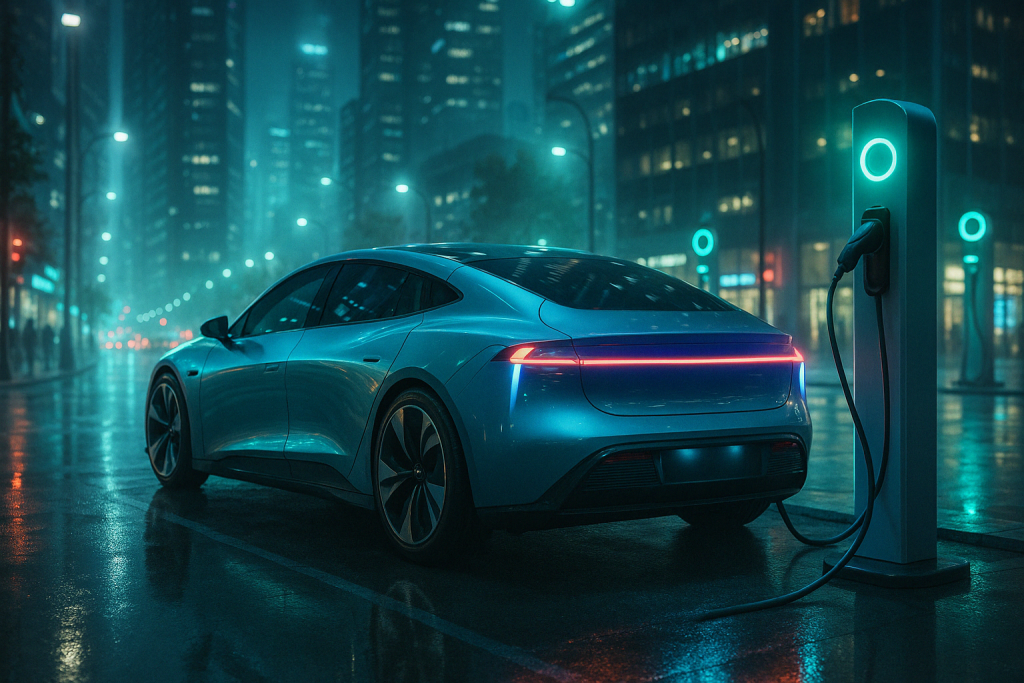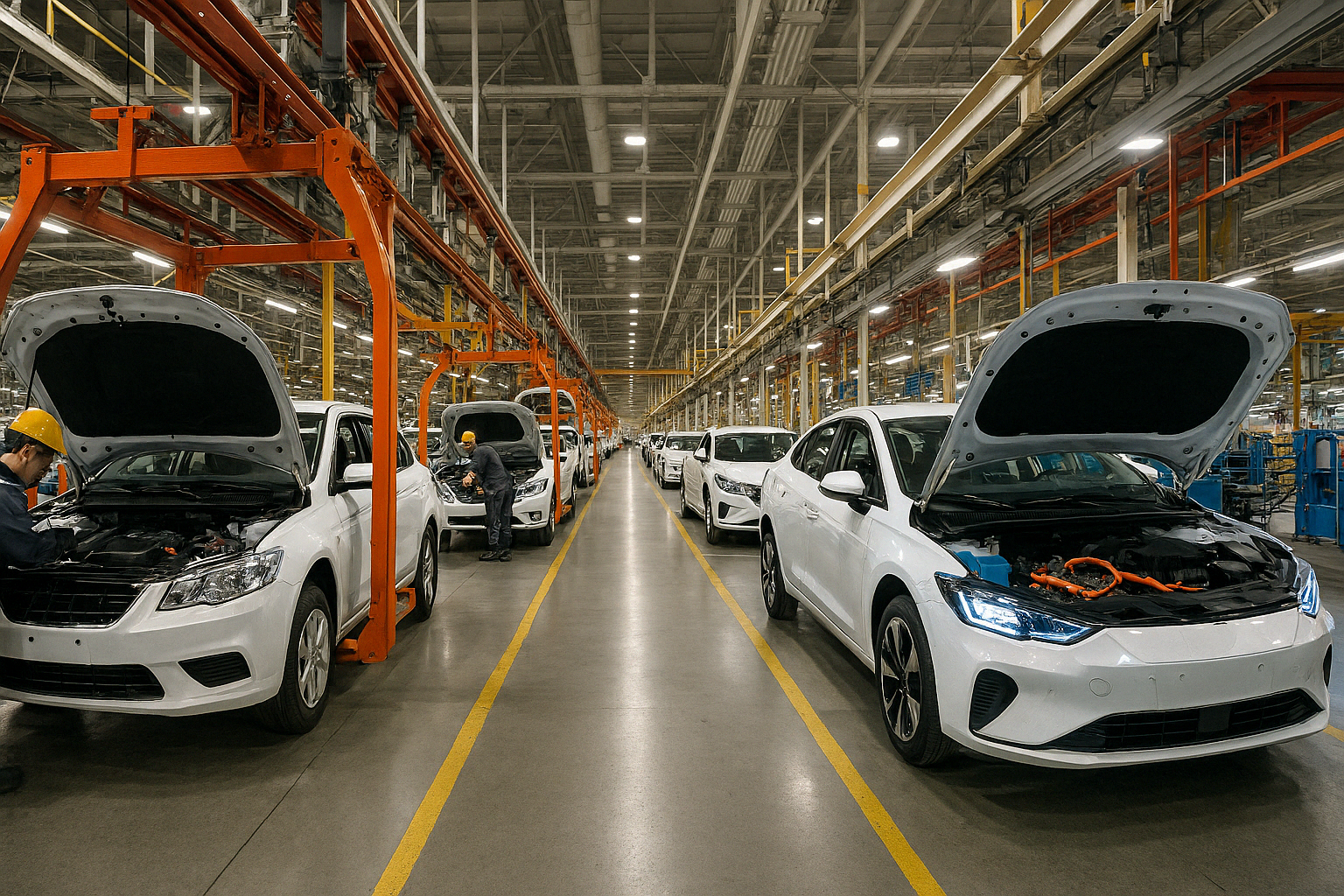The automotive industry is undergoing a massive transformation. With climate change becoming an ever-pressing concern and governments worldwide enforcing stricter emission regulations, electric vehicles (EVs) have emerged as the savior of the future of transportation. But despite the hype and promises, one question still looms large: Is the automotive industry really ready for the EV revolution?
Let’s explore this question and break down the current state of the industry, its challenges, advancements, and what the future holds for EVs.
Table of contents
- 1. The Current State of the Automotive Industry
- 2. Technological Advancements in Electric Vehicles
- 3. Challenges the Automotive Industry Faces
- 4. Key Players in the EV Market
- 5. How Automakers Are Preparing for the EV Revolution
- 6. The Role of Governments and Policy Makers
- 7. The Road Ahead: Opportunities and Potential
- Conclusion
- 10 Frequently Asked Questions About the EV Revolution and the Automotive Industry
- 1. What is the EV revolution?
- 2. How fast is the automotive industry adopting electric vehicles?
- 3. What are the main challenges to the widespread adoption of electric vehicles?
- 4. Are electric vehicles more expensive than traditional cars?
- 5. Will electric vehicles be able to replace gasoline-powered cars entirely?
- 6. How long does it take to charge an electric vehicle?
- 7. What impact will the EV revolution have on the environment?
- 8. Are there enough charging stations for electric vehicles?
- 9. Which automakers are leading the EV revolution?
- 10. How can I make my next car purchase an electric vehicle?
1. The Current State of the Automotive Industry
The automotive industry has been built on the back of internal combustion engine (ICE) vehicles for more than a century. The transition from gasoline-powered cars to electric ones is no small feat, and the road to EV adoption has been slow but steady.
However, the shift is becoming unavoidable. With increasing concerns over air pollution and global warming, both consumers and governments are demanding cleaner alternatives. The numbers are starting to reflect this shift—EV sales are on the rise, and many countries have set aggressive targets for phasing out fossil fuel-powered vehicles.
As of recent years, EV sales are growing faster than ever, with notable increases in countries like China, Europe, and the United States. This growth is helping to pave the way for a global transition to sustainable mobility.

2. Technological Advancements in Electric Vehicles
A significant factor driving the shift towards EVs is technological progress. From battery improvements to the expansion of charging infrastructure, automakers are investing heavily in making electric vehicles more accessible and efficient.
Battery Technology
Perhaps the most significant advancement in EV technology is the development of batteries. Battery life, energy density, and charging speeds have improved dramatically over the past decade. Modern electric vehicles can travel longer distances on a single charge, alleviating one of the main concerns that consumers had about range anxiety.
Charging Infrastructure
One of the primary barriers to EV adoption has been the availability of charging stations. However, governments and private companies are rapidly expanding charging infrastructure, making it easier for drivers to find charging stations in both urban and rural areas. As charging times decrease, the convenience of owning an EV continues to improve.
Autonomous and Connected EVs
The rise of autonomous driving and connected car technologies is also reshaping the EV market. Many electric vehicles are now equipped with advanced features like driver assistance systems, automated parking, and vehicle-to-grid capabilities. The integration of artificial intelligence, machine learning, and 5G connectivity in EVs is making them smarter and more efficient.
3. Challenges the Automotive Industry Faces
Despite the progress, the automotive industry still faces several challenges on its path to widespread EV adoption. These obstacles could delay or complicate the transition.
Supply Chain Issues
A major challenge is sourcing the raw materials needed to manufacture EV batteries, such as lithium, cobalt, and nickel. The limited availability of these materials and the geopolitical challenges associated with their extraction can lead to supply chain disruptions, impacting the production of electric vehicles.
Manufacturing Capabilities
Automakers are facing significant hurdles in retooling their factories to produce electric vehicles at scale. While companies like Tesla and Rivian have been built from the ground up to produce EVs, traditional automakers need to retrofit their manufacturing plants, which can be expensive and time-consuming.
Consumer Concerns
While the demand for EVs is rising, concerns about cost, charging availability, and maintenance remain. Electric vehicles are still relatively expensive compared to their ICE counterparts, making it difficult for some consumers to make the switch. Moreover, the widespread perception that EVs require a significantly different maintenance routine can deter buyers.
Government Regulations
Governments worldwide are enacting stricter emissions regulations and offering incentives for EV adoption. While these regulations are a catalyst for change, they can also create difficulties for automakers trying to meet the ever-evolving standards, especially when it comes to ensuring the availability of affordable, high-performance EVs.
4. Key Players in the EV Market
Several key players are driving the shift to electric mobility, each with its own approach to electrification.
Established Automakers
Legacy companies like Ford, General Motors (GM), and Volkswagen have all made substantial investments in electric vehicles. Ford, for instance, has committed to electrifying its most iconic models, such as the Mustang and F-150, while GM aims to have a fully electric lineup by 2035. Volkswagen has introduced its ID series and is rapidly expanding its electric offerings to cater to a diverse customer base.
EV Startups
Companies like Tesla, Rivian, and Lucid Motors have been at the forefront of the EV revolution, introducing innovative technologies and pushing the boundaries of what electric vehicles can achieve. Tesla, in particular, has redefined the EV market, bringing electric cars into the mainstream with its high-performance vehicles, innovative Autopilot feature, and long-range capabilities.
Global Competition
In addition to the major players in North America and Europe, companies from China, such as BYD and NIO, are rapidly gaining ground. With government backing, these companies are setting their sights on global expansion, offering affordable EVs that appeal to a broad range of consumers.
5. How Automakers Are Preparing for the EV Revolution
To meet the demands of the growing EV market, automakers are making bold moves.
Investment in Research and Development
To stay competitive, automakers are investing heavily in R&D for new EV models, improved battery technology, and alternative energy solutions. The race to produce longer-range EVs with faster charging times is intense, and automakers are focused on staying ahead of the curve.
Partnerships and Collaborations
Automakers are also entering strategic partnerships with tech firms, battery manufacturers, and even governments. Collaborations between companies like Volkswagen and QuantumScape are paving the way for next-generation battery technology that will make EVs more affordable and practical for the masses.
Transition Strategies
Legacy automakers are also adapting their business models to focus on EVs. Many have outlined timelines for phasing out internal combustion engines and transitioning to fully electric vehicle lineups. For instance, Volvo has committed to being fully electric by 2030, while GM plans to offer only electric vehicles by 2035.
6. The Role of Governments and Policy Makers
Governments have played a critical role in shaping the future of electric vehicles.
Incentives for Consumers
Governments worldwide have rolled out a variety of incentives to encourage consumers to make the switch to electric vehicles. These include tax credits, rebates, and subsidies that make EVs more affordable.
Regulations and Mandates
Many governments are also setting aggressive targets for phasing out fossil fuel-powered vehicles. In the European Union, for example, the goal is to ban the sale of new internal combustion engine vehicles by 2035. Similarly, California has set a target to make all new car sales zero-emissions by 2035 as well.
Public Infrastructure Investment
Governments are investing in the development of charging infrastructure. In the U.S., President Biden’s administration has committed to building 500,000 charging stations nationwide, making EV ownership more convenient for the public.

7. The Road Ahead: Opportunities and Potential
Looking ahead, the potential for electric vehicles is enormous. With EV sales expected to increase exponentially in the coming decades, the market presents numerous opportunities.
Market Growth
According to industry reports, global EV sales are forecasted to continue their rapid growth, reaching nearly 60% of all vehicle sales by 2040. The shift will be driven by technological advances, government policies, and increasing consumer awareness of the environmental benefits of EVs.
Job Creation
As the automotive industry transitions to electric vehicles, new jobs will be created in sectors such as battery production, EV manufacturing, and the development of charging infrastructure. This transition offers the potential for growth in green industries, benefiting economies worldwide.
Environmental Impact
The move to EVs is expected to have a significant positive impact on the environment by reducing greenhouse gas emissions and air pollution. By shifting away from fossil fuel-powered vehicles, we can move closer to meeting international climate goals and mitigating the effects of climate change.
Conclusion
The automotive industry is undoubtedly in the midst of an electric revolution. While there are challenges to overcome—ranging from supply chain issues to consumer adoption—there is no doubt that the industry is gearing up for a future dominated by electric vehicles. With technological advancements, government incentives, and a growing commitment from automakers, the shift to EVs is well underway.
As the world embraces this change, it’s essential to consider how consumers, manufacturers, and governments will continue to play a vital role in shaping the future of transportation. The road ahead may have its bumps, but the destination is clear: a cleaner, greener, and more sustainable automotive future.
10 Frequently Asked Questions About the EV Revolution and the Automotive Industry
1. What is the EV revolution?
The EV revolution refers to the shift from internal combustion engine (ICE) vehicles to electric vehicles (EVs) as the primary mode of transportation. This transition is driven by the need for cleaner, more sustainable transportation options to reduce greenhouse gas emissions and combat climate change.
2. How fast is the automotive industry adopting electric vehicles?
The automotive industry is adopting electric vehicles at a rapid pace, with global EV sales steadily increasing each year. However, the rate of adoption varies by region and manufacturer, with some automakers already producing large quantities of electric models, while others are still in the early stages of transitioning their production lines.
3. What are the main challenges to the widespread adoption of electric vehicles?
Key challenges include high upfront costs, limited charging infrastructure, range anxiety (fear of running out of battery), and the availability of raw materials for batteries. Additionally, transitioning manufacturing processes and supply chains to support EV production remains a challenge for many traditional automakers.
4. Are electric vehicles more expensive than traditional cars?
Currently, electric vehicles tend to have a higher initial purchase price compared to traditional gasoline-powered cars. However, the cost of EVs is decreasing as technology improves, and long-term savings on fuel and maintenance often make EVs more cost-effective over their lifespan. Many governments also offer incentives to lower the upfront cost.
5. Will electric vehicles be able to replace gasoline-powered cars entirely?
In the long term, it’s expected that electric vehicles will become the dominant form of transportation, with many countries setting ambitious targets to phase out gasoline and diesel vehicles. However, full global adoption of EVs will depend on overcoming infrastructure and technological challenges.
6. How long does it take to charge an electric vehicle?
Charging times for electric vehicles vary depending on the battery size and the type of charger used. Fast-charging stations can recharge a battery to 80% in about 30 minutes, while home chargers may take several hours for a full charge, depending on the power output.
7. What impact will the EV revolution have on the environment?
The shift to electric vehicles is expected to reduce greenhouse gas emissions and air pollution. EVs produce zero tailpipe emissions, and when paired with renewable energy sources like solar and wind, their environmental benefits are amplified, helping to mitigate the effects of climate change.
8. Are there enough charging stations for electric vehicles?
The availability of charging stations is improving, with governments and private companies investing heavily in building infrastructure. However, in some areas, especially rural or less-developed regions, the charging network may still be insufficient. Over time, as the EV market grows, so will the number of charging stations.
9. Which automakers are leading the EV revolution?
Tesla is widely regarded as the leader in the electric vehicle market, but many other automakers are making significant strides. Companies like Ford, General Motors, Volkswagen, and BMW are investing heavily in electric models. Additionally, new startups like Rivian and Lucid Motors are challenging the established players with innovative EV designs.
10. How can I make my next car purchase an electric vehicle?
To purchase an electric vehicle, you can visit dealerships that offer EVs, browse online platforms, or check with automakers’ official websites to explore available models. Consider factors such as range, price, and features that suit your needs, and take advantage of any available government incentives to reduce the cost.




10 thoughts on “Is the Automotive Industry Ready for the EV Revolution?”
8wbf4g
3geih8
gvkhwu
tedlfe
vid6m9
6mjgjr
9o45u5
ex5u0z
tb7r7w
Thanks for sharing. I read many of your blog posts, cool, your blog is very good.